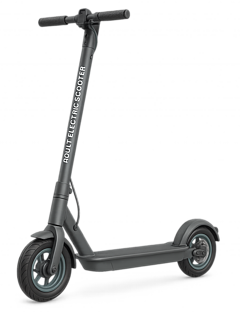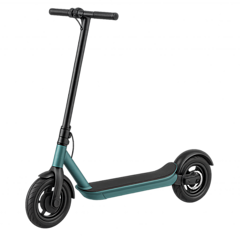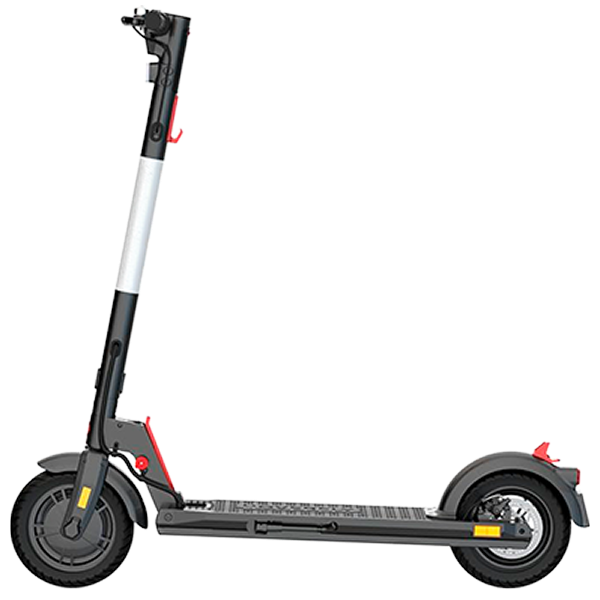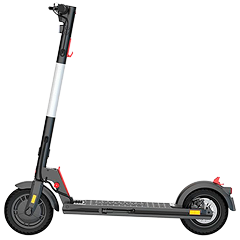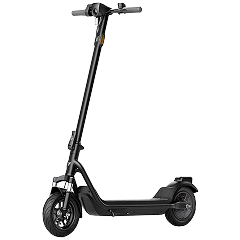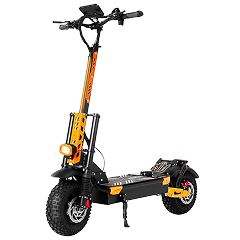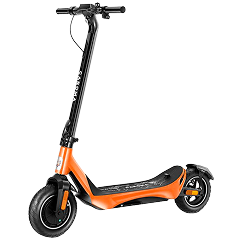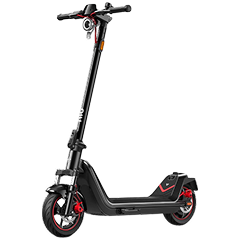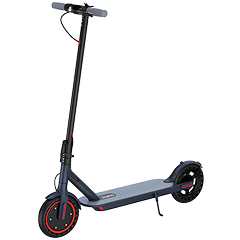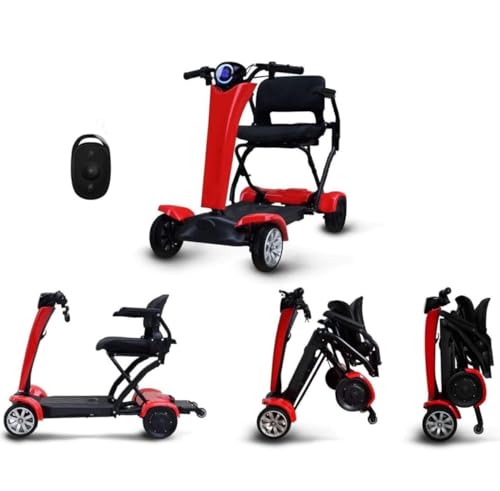Electric scooters have gotten way better and cheaper over the years, and that’s great news if you’re watching your budget. You can actually get a solid ride now without emptying your bank account. The tricky part is figuring out which affordable scooters are genuinely good versus which ones are just…cheap.
When we say “cheap” or “affordable” in the scooter world, we’re looking at anything under $500, maybe pushing it to $600. That might still sound like a chunk of change, but compared to scooters pushing $2,000 or more, this is definitely budget territory. And honestly, you can get something pretty decent in this range if you know what to look for.
Some no-name or off-brand scooters might have crazy-good specs at unrealistic prices. Be wary, as oftentimes, those claims are exaggerated, and the build quality or support can be lacking.
The breakdown below focuses on what you can typically expect from reputable brands in each price tier. If an unknown brand advertises specs way above these for the same price, take it with a grain of salt.
Breaking Down the Price Brackets
These aren’t hard rules, but they’re pretty consistent patterns across the market.
The $200-$299 Range: Basic But Functional
Okay, so scooters in this range are basically motorized skateboards with handlebars. They’ll get you from point A to point B, which is really all some people need. Perfect for zipping around a college campus, running neighborhood errands, or last-mile rides to and from the bus stop.
They’ve got just enough power for flat ground and maybe a gentle incline, but any serious hill will have you kicking to assist (or crawling up slowly). Don’t expect to be wowed at this level. The upside? They’re light and easy to carry.
What You Get:
Feature Set:
What features to expect (or not expect) at $200–$299:
- Tires: Small, 8–8.5-inch wheels, often featuring solid rubber or basic pneumatic tires.
- Brakes: Usually one brake only (electronic regen or a drum brake). Plan your stops like a freight train. In other words, give yourself plenty of braking distance.
- Suspension: None. You’ll feel every bump. It handles road cracks about as well as roller skates on cobblestone, which is to say, not great.
- Water resistance: Most have basic splash protection (IPX4). Light rain or the odd puddle is okay.
- Lights & Extras: Simple LED headlight and a basic taillight. You’ll usually get a little bell for warning pedestrians.
The $300-$399 Range: A Little More Juice
Spend another hundred bucks, and things start getting interesting. The extra money buys you a bit more speed and range, and sometimes a couple of quality-of-life improvements that the ultra-budget electric scooters lack.
What You Get:
Feature Upgrades:
Compared to the ultra-budget tier, here’s what starts to improve:
- Tires: 8.5–10 inch tires, including more pneumatic (air-filled) options. Some models in this range upgrade from solid rubber to air tires, giving you a slightly smoother ride and better grip.
- Brakes: Dual braking becomes more common, usually combining a drum or disc brake with regenerative braking. This means safer stopping power compared to having just one brake.
- Tech & Conveniences: Brighter lights for better visibility, and often cruise control for easier long rides. A lot of scooters here even come with a basic mobile app (for features like lock, light controls, or ride stats).
- Water Resistance: Most still have basic splash protection (IPX4), but you start to see a few with an IPX5 rating.
$400–$499: The Sweet Spot
Scooters in the $400–$499 bracket are often considered the sweet spot for value. Here you start to get legitimate commuter credentials. In other words, a scooter that doesn’t feel like a toy, but a reliable daily ride.
Motors in this class have more oomph. The decks tend to be longer or wider, giving you a more comfortable stance (great for those longer commutes). Battery capacity jumps up as well, meaning these scooters won’t abandon you halfway through your journey. You also see more safety and durability features: better brakes, stronger frames, and useful extras that make a difference when you’re riding every day.
What You Get
Feature Upgrades:
What makes this “sweet spot” tier special?
- Tires: 8.5–10 inch tires, with many models offering pneumatic tires for a smoother ride (some still use solid, but higher quality).
- Brakes: Dual-brake setups are standard here, typically a disc brake and regen combo. Braking feels more responsive, and stopping distances improve.
- Suspension: You might start seeing basic suspension in this tier. Don’t expect a magic carpet ride, but a few models throw in a simple spring either in the front stem or under the rear, which helps a little on rough pavement (though it’s often quite stiff).
- Weather Sealing: Expect at least IPX4 water resistance, with some models having IPX5 or IPX6.
- Safety Certs: You’ll start seeing UL 2272 certification on a lot of scooters here. This is a big deal for electrical safety (it’s a certification that the battery/electrical system meets strict safety standards, reducing risk of fires).
The $500-$599 Range: Premium Features on a Budget
Now we’re at the high end of “budget.” In the $500–$599 bracket, you’re brushing up against features that (in the recent past) used to be found only on $1000+ premium scooters. Top speeds edge into the 20+ mph zone, which is pretty zippy for an entry commuter scooter. Build quality also tends to be better, with sturdier frames, better components, and a more polished finish.
What You Get:
Feature Upgrades
Here’s what that extra money buys:
- Brakes: Almost all scooters here have dual brakes, and often they’re higher quality (e.g., dual disc brakes plus regen).
- Suspension: Dual suspension (front + rear) is common on the top models in this tier.
- Tech & Comfort Extras: You’ll find integrated turn signals on some models, brighter headlights, and often customizable LED deck lights (sometimes even full RGB light shows). Cruise control is usually standard, and some scooters add features like an electronic lock via app or NFC key card.
- Durability & Safety: Higher IP ratings are common (IPX5, IPX6). Nearly all models will have UL certified batteries for peace of mind. Overall build quality (frame, folding mechanism, etc.) is more solid, built to handle daily use.
Stuff You Shouldn’t Compromise On
Even if you’re bargain-hunting, there are a few important things you shouldn’t skimp on or ignore when choosing a budget electric scooter:
Safety (Brakes & Lights)
Make sure the scooter has a reliable braking system. Dual brakes (e.g., a front electronic brake + rear drum or disc) are much safer than a single brake. Also, check the lights; at minimum, you want a headlight and a tail/brake light.
Certification
Look for UL certification, especially UL 2272 for the electrical system. Saving fifty bucks isn’t worth the fire risk from sketchy batteries.
Weather Resistance
At least an IPX4 rating unless you live in the desert and never see rain. IPX4 or better is ideal for most climates.
Weight Limit
Check the max rider weight spec. Many budget scooters have a weight limit around 220 lbs (100 kg). If you’re a heavier rider, a cheap scooter might struggle to perform as advertised; you’ll get lower speed and range, especially on hills. In some cases, repeatedly overloading a scooter can also wear it out faster or even be unsafe.
Customer Support & Parts
When you buy a cheap electric scooter, consider the brand’s reputation. Established brands might have slightly lower specs for the price, but they often offer better customer support, warranty service, and replacement parts availability.
Warranty
Even cheap scooters should come with at least 6 months coverage. No warranty usually means the manufacturer has little to no confidence in their product.
The Reality Check
Cheap electric scooters have come a long way. You no longer need to spend a fortune to get a reliable one, but stay realistic about what your money buys. Performance and features still sit on the lower end of the spectrum.
Try not to cheap out too much either, because scooters follow Vimes’ “Boots” Theory of economics. Going too cheap might cost you more later. A $250 scooter can work as a starter, but don’t be surprised if you outgrow it (or it wears out) within six months to a year.
If you can stretch your budget into the $400–$500 range, you’re more likely to get a scooter that can serve you reliably for several years without feeling underpowered or falling apart. In other words, the sweet spot is around $400–$500, where you get the best bang for your buck.
Below that range you accept compromises. Above $500 you’re set. Match your expectations to your budget, spend what you can, and know the performance level you’ll get in return.
FAQ
Can You Get a Decent Electric Scooter for Under $400
- Range: Around 10 miles of real-world riding on a full charge (give or take a couple miles).
- Speed: 10-15 mph is typical, maybe 20 mph if you’re lucky
- Power: Motors about 250–350 W. That’s fine for flat ground and slight inclines.
- Suspension: Usually none. If a model does have suspension under $400, it’s likely just a basic spring that doesn’t do a whole lot. You’ll feel most bumps unless you have air tires to soften the ride.
- Tires: A mix of solid and pneumatic tires. Most common are 8.5-inch diameter, and not very wide (around 2 inches).
- Deck size: Generally small and cramped. Expect a deck around 17–19 inches long and maybe 5–6 inches wide. It’s enough for one foot in front of the other, but you won’t have a ton of room to move your feet around.
- Features: Very utilitarian. Basic lights, maybe a simple LED screen for battery/speed, and a bell. Don’t expect Bluetooth apps, turn signals, or fancy stuff at this price.
The good news is that with everything kept minimal, these scooters tend to be light and portable (often 25–28 lbs). They’re easy to carry on public transport or up a flight of stairs, which is great for city commuters.
How Much Does a “Good” Electric Scooter Cost
If you go into the $1000 range, you get into very high performance or long-range models, but you might not need to spend that much. For a casual rider or commuter, spending around $500 will get you something quite good. And, of course, prices tend to drop during holiday sales or when new models are released, allowing you to plan ahead and take advantage of these periods.
What Is the Lowest Price for a Decent Adult Electric Scooter
Are Cheap Electric Scooters Safe
The problems come when you push them beyond their limits or buy from sketchy, no-name brands. So stick to the scooter’s weight limit and speed recommendations, and use it with the manual recommendations.
It’s also wise to check that your scooter has a UL-certified battery and no known fire-safety issues. Many well-known budget models do. Always double-check the brakes before you ride. Sometimes electric scooters might need a bit of tuning or break-in for the brakes to work optimally.
And of course, wear a helmet and follow local traffic laws. Most accidents are due to rider error or poor riding conditions, not the scooter failing. So as long as you ride within the scooter’s capabilities (and keep up with any minor maintenance like tightening loose bolts), a cheap scooter can be perfectly safe for everyday use.
Can I Ride a Budget Scooter in the Rain
For example, IPX4 is “splash resistant” from any direction so riding through occasional drizzles or a few puddles is fine. IPX5 means it can handle jets of water, so a steady rain is generally okay.
But even with decent water resistance, cheap scooters aren’t completely waterproof. Water finds ways into electronics, especially on cheaper scooters where the seals might be questionable.
Plus, wet conditions make everything more dangerous. Your deck gets slippery, your tires lose grip, and your stopping distance doubles. Solid rubber tires, which most budget scooters have, are especially sketchy in the wet.
And it’s almost 100% guaranteed that your warranty will be invalid if your scooter gets damaged from moisture finding its way into critical components. If you absolutely have to ride in the rain, go slow and brake early. Way early. And if rain is going to be a regular thing for your commute, spend the extra money on something with IPX6 or IPX7 rating.
How Long Will a Cheap Electric Scooter Last
The biggest failure points on very cheap scooters are often the electronics or frame if they’re poorly made (e.g., a folding mechanism might get wobbly).
Also, tires (especially pneumatic ones) will wear out or get flats over time. Plan on replacing them every 500–1,000 miles, depending on your roads. Brakes will need occasional adjustment and eventually new pads as well.
You can extend the life of your scooter by babying it, which means avoiding any form of rough riding, curbs, and jumps, storing it indoors, charging it properly, and keeping up with maintenance. However, at some point, something major will fail. At least with a cheap scooter, you’re not out a lot of money when it happens.


